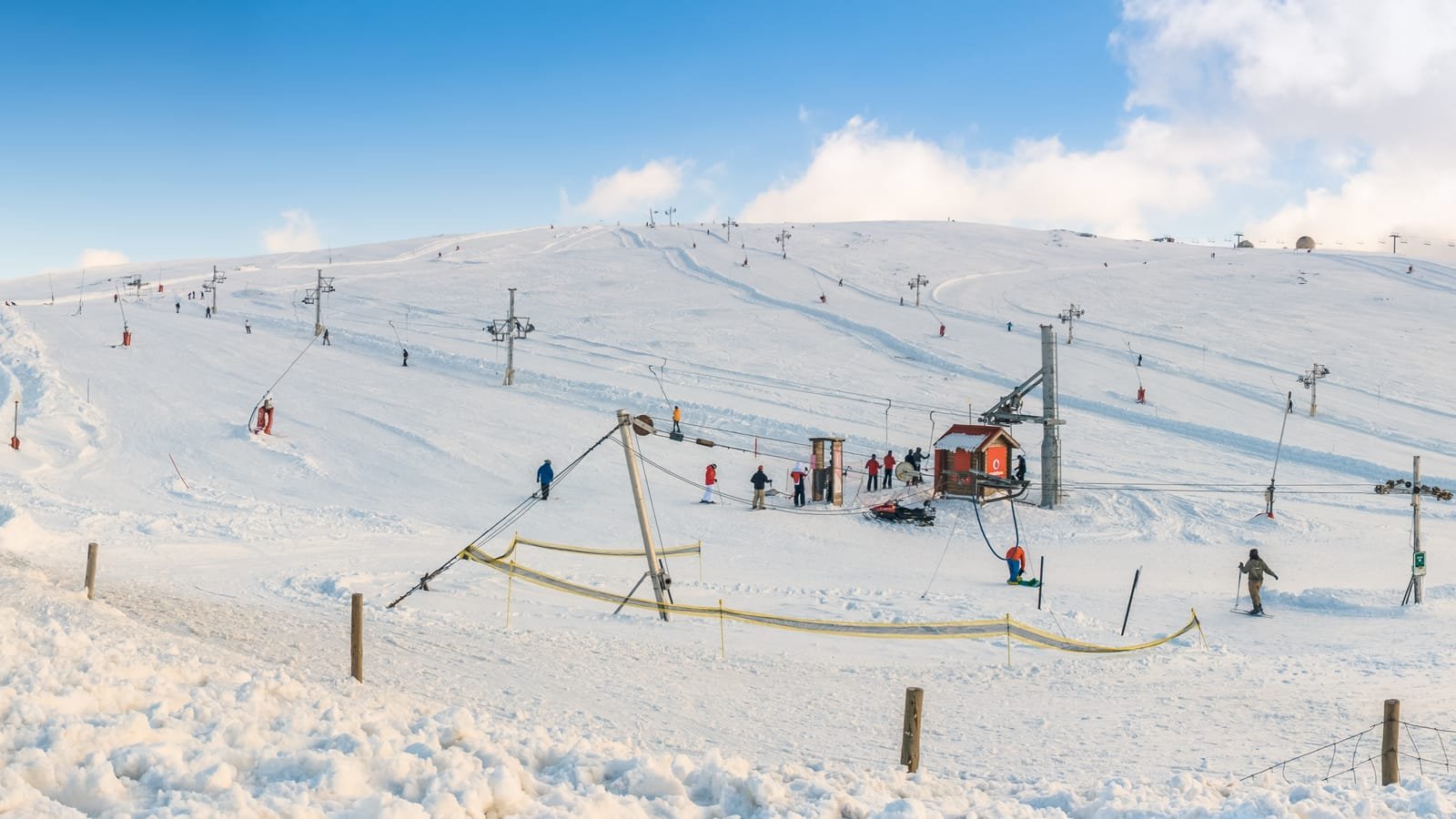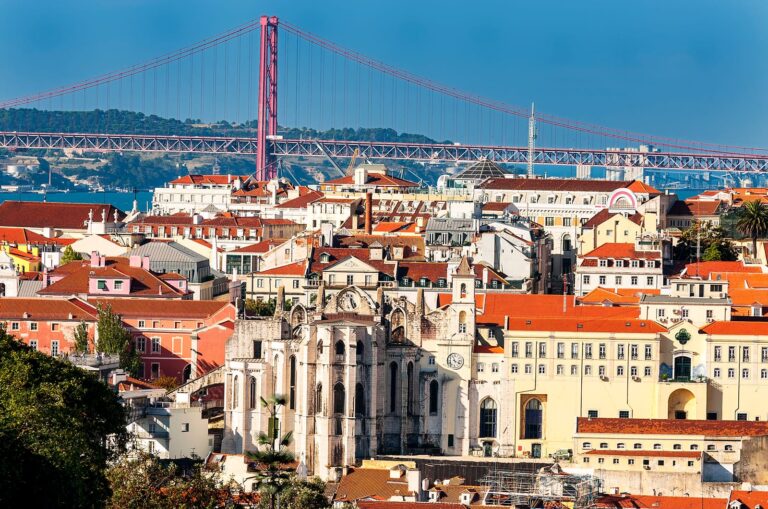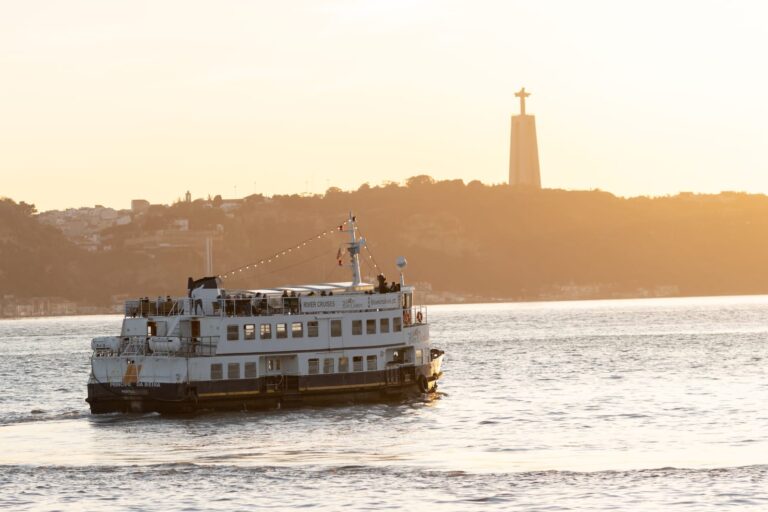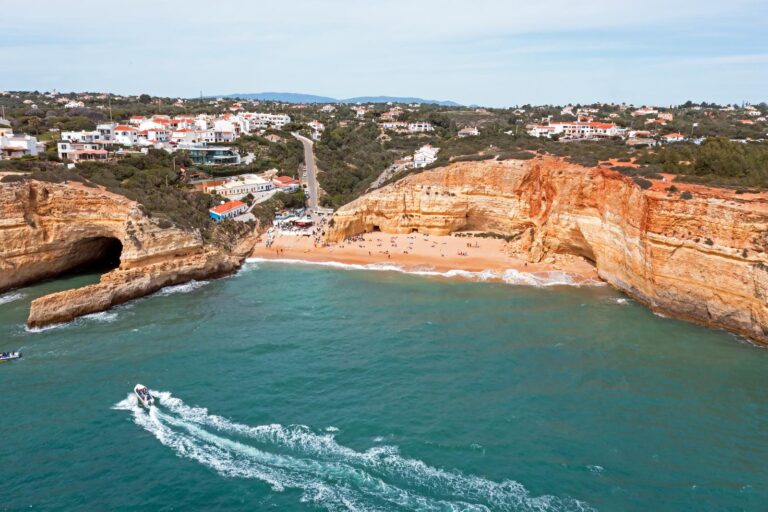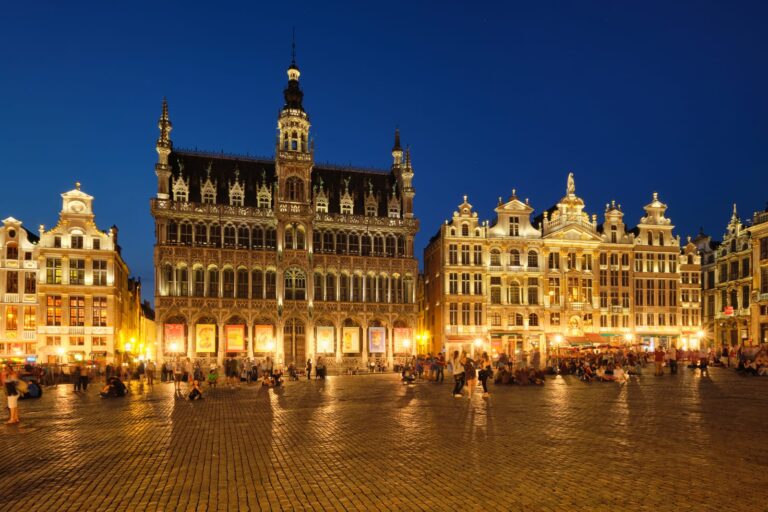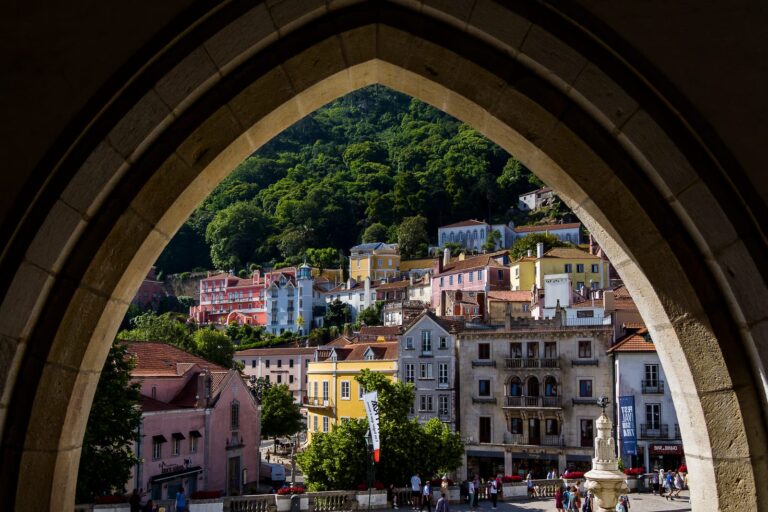Does It Snow in Portugal? Discovering Winter Weather in the Iberian Peninsula
When dreaming of a winter getaway, you might wonder about the unique weather conditions in Portugal.
Snow is rare in most parts of the country, but it does fall in certain mountainous regions like Serra da Estrela.
If you’re planning a visit during the winter months, you’ll likely experience mild temperatures contrasted with some rainfall.
For those who crave a winter wonderland experience, Portugal offers a few spots where you can enjoy snow.
Locations such as the Serra da Estrela become charming ski destinations, inviting you to explore snowy landscapes and winter sports.
Curious about what to expect and where to find snow in Portugal? This article will guide you through the winter climate, the sites you can visit for snow activities, and tips for making the most of your chilly adventure.
Climate Overview of Portugal
Portugal enjoys a Mediterranean climate, which means you can expect warm, dry summers and mild, wet winters. The overall weather varies significantly between regions.
Temperature Range:
- Coastal areas like Lisbon and Porto have milder temperatures.
- Average winter temperatures in these cities are about 12°C (53.6°F) during the day.
Northern vs. Southern Regions:
- The north tends to be cooler and wetter.
- The Algarve in the south enjoys the warmest winter temperatures, often reaching 17°C (62.6°F).
Rainfall:
- Most rainfall occurs in winter months, particularly from November to February.
- Coastal areas are milder, while the interior can experience cooler temperatures and more precipitation.
Snowfall:
- Snow is rare in coastal cities but can occur in the mountains.
- The Serra da Estrela region sees significant snowfall during winter, making it a unique destination.
This diversity in climate means you can choose from beach resorts or snow-capped mountains depending on your preference. With a mix of sun and rain, Portugal’s climate offers something for everyone, regardless of the season.
Geographical Factors Affecting Weather in Portugal
Portugal’s unique geography significantly influences its weather patterns and climate. The contrast between coastal areas and mountainous regions creates varying conditions across the country, affecting everything from temperature to precipitation.
Coastal Influence
The coastal areas of Portugal, especially cities like Lisbon and Porto, experience a Mediterranean climate. This means mild, wet winters and hot, dry summers.
The Atlantic Ocean plays a crucial role in moderating temperatures. It prevents extreme variations, resulting in winter temperatures rarely dropping below 8°C (46°F). This makes snow in coastal cities quite rare.
Additionally, the ocean brings moisture, leading to increased rainfall during the winter months. With about 60% of Portugal’s population living along the coast, the mild winters mean that outdoor activities remain popular, despite the rain.
Mountainous Regions
In contrast, the mountainous regions, particularly the Serra da Estrela, experience a different climate. This area is the highest in mainland Portugal and has distinct weather patterns.
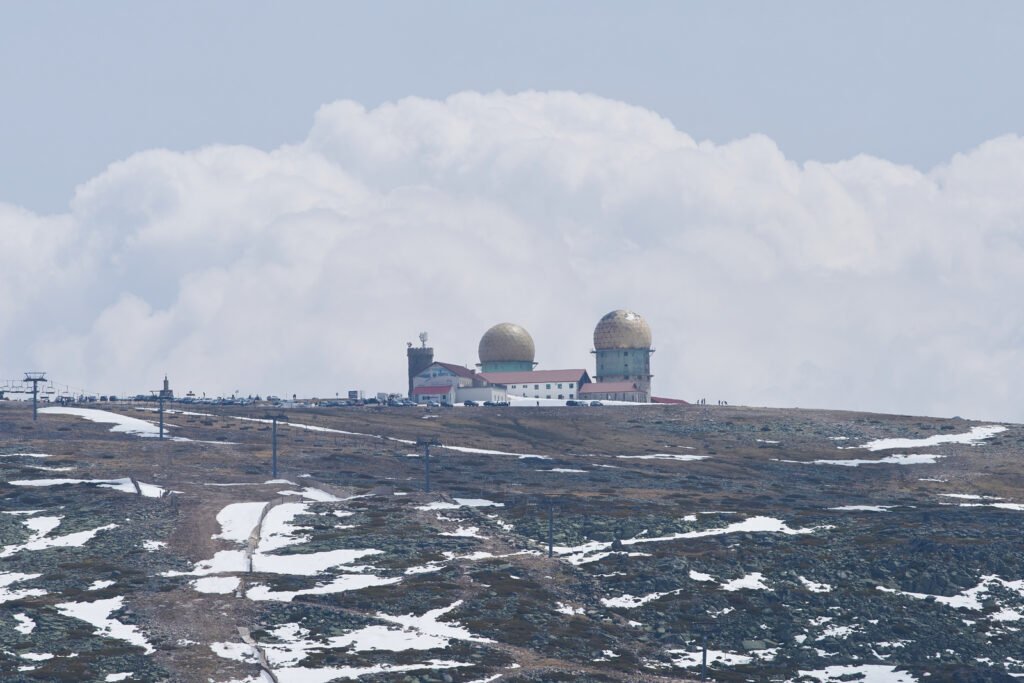
During winter, temperatures can drop significantly, and snowfall is common. The Serra da Estrela often transforms into a winter wonderland between December and February, attracting tourists for skiing and other winter sports.
Elevation plays a key role here. As you ascend, temperatures decrease, often falling below 0°C (32°F), resulting in a higher likelihood of snow. This geographical variation showcases how Portugal’s diverse landscapes contribute to its overall weather.
Snow Occurrences in Portugal
Snow in Portugal might not be as common as in other European countries, but it does happen in specific regions. Each area has its unique characteristics when it comes to snowfall, so let’s explore how this phenomenon manifests in different parts of the country.
Northern Portugal
In northern Portugal, particularly in the mountain ranges, snowfall can be quite noticeable during winter. The Peneda-Gerês National Park and the Serra do Marão often experience significant snow due to higher altitudes.
Typical snowfall months: December to March.
You can expect heavier snowfall at elevations above 1,200 meters. Cities like Braga and Guimarães rarely see snow in their lower altitudes but can experience flurries if cold fronts move through. The northern region’s combination of cold temperatures and mountainous terrain allows for a picturesque winter landscape, especially in the highest peaks.
Central Portugal
Central Portugal, especially the Serra da Estrela range, is renowned for its snow occurrences. As the highest mountain range in mainland Portugal, it offers reliable winter snow, making it a popular destination for winter sports.
Snow depth can reach up to 2 meters in some areas during peak winter months.
The towns of Covilhã and Seia serve as gateways to snow activities, attracting visitors eager for skiing and snowboarding. With a well-developed infrastructure, you can enjoy both natural beauty and winter sports in this region. Snow season typically runs from late December through early March, creating a winter wonderland that provides excellent opportunities for outdoor activities.
Southern Portugal
Southern Portugal, particularly the Algarve, is known for its mild winters. However, snowfall is very rare. You might see light flurries in the higher elevations of the Serra de Monchique, but this is infrequent.
Temperatures in this region remain far milder compared to the north.
Cities like Faro and Lagos enjoy warmer winter weather, often resembling a pleasant spring rather than a snowy winter. The distinctly different climate of the south means that if you seek snow, it’s better to venture to the central or northern mountains where snow is more prevalent during winter months.
Major Snow Events in Portuguese History
Snow in Portugal is relatively rare, but some significant events stand out in history.
In January 1987, a notable snowstorm hit the country. It blanketed several regions, including Lisbon, and even down to coastal areas, which is unusual. This event caused disruptions in transportation and led to school closures.
Another memorable event took place in February 2018. Much of Portugal experienced heavy snowfall, especially in the Serra da Estrela mountains. This snowfall was significant for locals and tourists who flocked to ski resorts.
In terms of impact, here are some key points from these events:
1987 Snowstorm:
- Affected major cities.
- Caused transportation issues and school closures.
2018 Snowfall:
- Focused in mountainous regions.
- Boosted winter tourism in ski areas.
Although snow doesn’t occur often, these events remind you that winter can surprise Portugal. If you love snow, visiting during these rare moments can offer a unique experience.
Top Destinations for Snow in Portugal
If you’re looking for snowy adventures in Portugal, the Serra da Estrela is your top choice. This mountain range features the highest peaks in continental Portugal, often attracting snow lovers.
In Serra da Estrela, winter typically brings significant snowfall. You can enjoy activities like skiing and snowboarding or simply take in the beautiful winter landscapes.
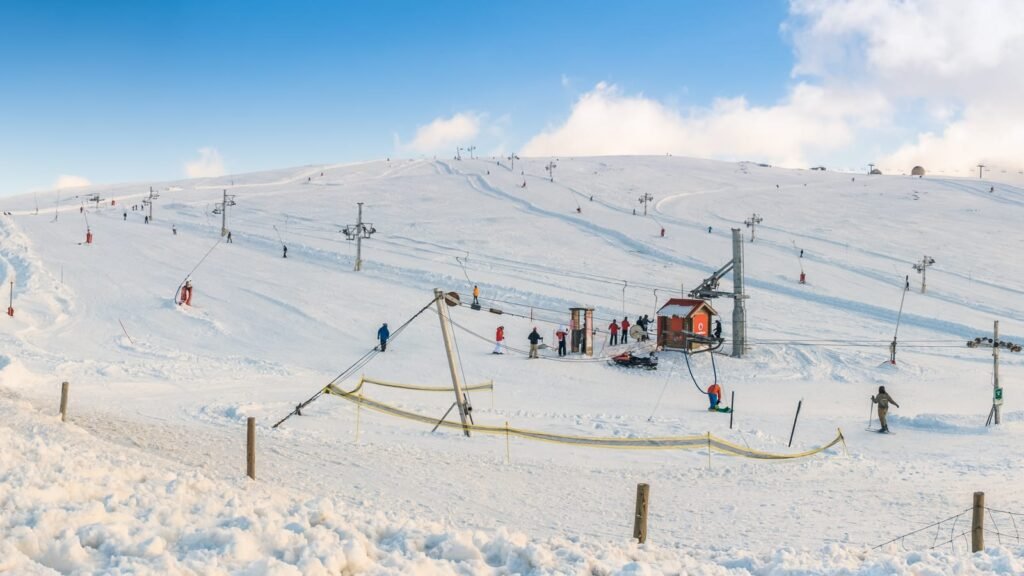
The Guarda region also gets its fair share of snow. It’s a charming area worth visiting for picturesque views and local culture.
In some parts of Bragança, you might find snow in the colder months too, especially at higher elevations. The quaint towns in this region offer a cozy atmosphere perfect for winter getaways.
Cities like Lisbon and Porto rarely see snow. Occasional cold fronts might bring sleet, but you should head inland for a true winter experience.
Remember to check the weather conditions before you go. Enjoy the snowy landscapes, outdoor activities, and delightful local cuisine as you explore the winter charm of Portugal!
Best Time of Year for Snow in Portugal
If you’re hoping to experience snow in Portugal, the best time is during the winter months. Snowfall mainly occurs between December and April.
In particular, the Serra da Estrela mountain range is your top destination for snow. It is the highest point in mainland Portugal, attracting winter sports enthusiasts. Here’s a quick breakdown:
- December: Expect early snowfalls, especially towards the end of the month.
- January: This is typically the snowiest month, with temperatures often dropping to the low 30s Fahrenheit.
- February: Snow can still be significant, providing opportunities for skiing and snowboarding.
- March: Snowfall can continue, but it may start to melt as temperatures gradually rise.
While you might spot a light dusting in some lower regions, significant accumulation is mainly found in the mountains. Keep in mind that snow is less common in areas like Lisbon or the Algarve, where the winters are milder. If you want a snowy escape, head for the heights of Serra da Estrela for the best chance of enjoying the winter wonderland.
Activities to Enjoy in the Portuguese Snow
When snow falls in Portugal, especially in the Serra da Estrela region, it opens up various fun activities for you to explore.
Skiing and Snowboarding:
Serra da Estrela boasts the only ski resort in mainland Portugal. Whether you’re a beginner or have some experience, you can enjoy the slopes.
Snowshoeing:
If you’re not keen on skiing, snowshoeing is a lovely way to explore the snowy landscapes. You can rent equipment and enjoy the serene beauty.
Winter Hiking:
Discover stunning trails covered in snow. Winter hikes offer a peaceful experience with breathtaking views of the snow-blanketed mountains.
Explore Winter Markets:
Visit local winter markets for seasonal treats and warm drinks. It’s a great way to immerse yourself in Portuguese culture while enjoying the festive atmosphere.
Enjoy Hot Chocolate and Local Cuisine:
Warm up with a cup of hot chocolate after a day in the snow. Don’t miss trying traditional Portuguese dishes that are perfect for winter.
Photography:
Capture the magic of Portugal’s winter scenery. The contrast of snow with the landscape creates stunning photography opportunities.
Impact of Climate Change on Portuguese Snowfall Patterns
Climate change is influencing snowfall patterns in Portugal. While winters can be mild in many regions, trends show changes in snowfall frequency and intensity.
Historically, snowfall was more common in inland areas, especially in the mountains. However, rising temperatures are leading to:
- Reduced snowfall: Warmer winters mean less snow accumulation.
- Increased rain: More precipitation is falling as rain rather than snow.
As temperatures rise, the likelihood of extreme weather events also changes. You might experience sudden snowfalls, but they could become less predictable.
In some regions, like the Serra da Estrela, winter storms can bring significant snow. Yet, with climate projections indicating a potential 4.3°C increase by 2100, the impact will be notable.
According to studies, the consequences of this warming could include:
- A decrease in snow cover duration
- Altered local ecosystems that depend on winter snow
Farms and tourism that rely on consistent winter weather may also suffer due to these changes. If you enjoy winter sports, it’s worth noting that conditions may become less reliable over time.

